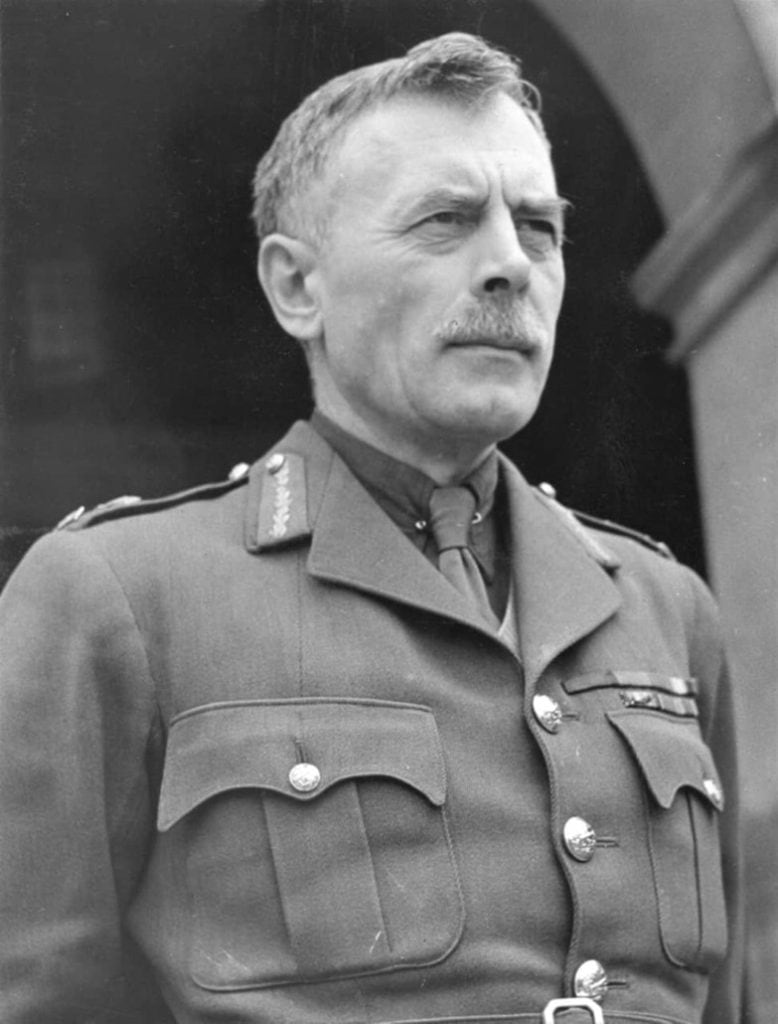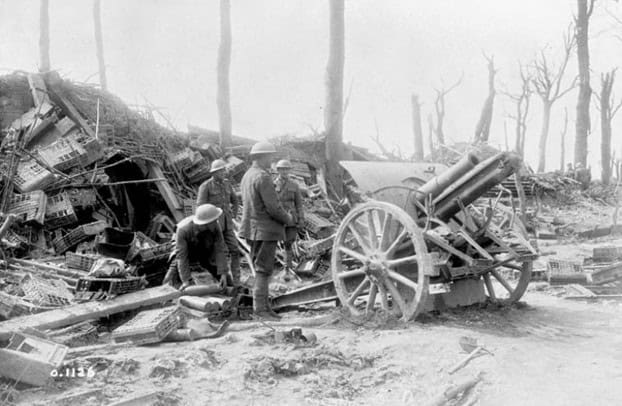Sound Ranging and Vimy Ridge
A reliable source told me a story or folktale that a Canadian soldier invented the idea of sound ranging while in a lavatory on the Western Front. The soldier noticed waves forming in a small pool of water after each successive thumping of the guns and wondered if sound waves could locate enemy guns. While it is certainly plausible, this story is not historically accurate or valid. Instead, scientists from many nations invented and perfected sound ranging before and during WW1. Leo Lowenstein, a German physicist, first patented the concept of sound measurement to locate enemy guns in 1913. When Lowenstein presented the idea to the German army that year, they rejected it.
In the early stages of the First World War and the emergence of trench warfare, the Germans and French were actively looking for any scientific and technological advances to help them locate enemy guns. Other countries, such as the Americans, British, and Russians, were also keen to incorporate any scientific advances that gave them an edge. It meant that scientists from many nations worked on technological advances to locate enemy guns.
Scientists learned that when artillery fire, they produced a low decibel sound that low-frequency microphones could record. The basis of sound ranging used multiple microphones to determine the coordinates of enemy guns. It included a network of listening posts with microphones and other specialized equipment to determine each sound wave’s timing, direction, and strength. The system required up to six microphones several kilometres apart and machines to process the results. With this equipment, armies could analyze sound waves and chart the location of enemy guns.
Sound ranging was a passive method that was untraceable, and the equipment was small and easy to transport. It had disadvantages such as how the speed of sound changes with temperature and weather conditions. It was hard to distinguish between the sound of the gun firing, the sound of the projectile in the air and the sound of the impact explosion. In addition, those using this method could only locate the guns after firing, and when multiple guns fired, it was difficult to pinpoint one gun.
Our museum references LCol A. G. L. McNaughton advancing counter-battery techniques, such as sound ranging. Canada did not invent sound ranging, but Canadian soldiers such as LCol McNaughton helped make it more effective. Specifically, McNaughton led an operational research team that advanced modern sound ranging and flash spotting that allowed Canadian Gunners to locate, target, and destroy enemy guns before the Battle of Vimy Ridge that lasted from 9 to 12 April 1917.

A photo of General A. G. L. McNaughton, PC, CH, CB, CMG, DSO, CD (1887 – 1966).
LCol McNaughton’s operational research team contained leading British scientists, including Sir William Bragg, Charles Darwin (the evolutionary scientist’s grandson), and Lucien Bull. Sir William Bragg commissioned in the Royal Horse Artillery and worked on sound ranging early in the war. He developed an airwave indicator to locate the low-frequency boom of the enemy artillery, which proved very effective.

The Canadian Field Artillery using a captured German 4.2 inch howitzer during the Battle of Vimy Ridge, April 1917. Photo credit Library and Archives Canada (3194730).
First, before the Battle of Vimy Ridge, the Canadian Artillery fired hundreds of thousands of rounds with the new No. 106 instantaneous fuse. This fuse exploded upon impact with the ground or with barbed wire and did not create large craters. The Canadian Artillery removed the German barbed wire, allowing the Allies to advance up the ridge unobstructed.
Second, during the battle, the Canadian Artillery used rolling and creeping barrages to stop German machine gunners from firing on advancing Canadian infantry. Shells landing in front of the advancing infantry kept enemy troops in their dugouts and allowed the Canadians to advance up the ridge.
Third, the four divisions of the Canadian Corps used the information gained from sound ranging and flash spotting to locate and destroy enemy guns. Flash spotting used the flash of the gun firing and provided an optical measurement for the location of enemy guns. McNaughton’s team used a 1:10,000 scale map to plot each enemy gun. They also used aerial surveillance to confirm the location with aerial photography.
From 20 March to 9 April 1917, during the preliminary bombardment of Vimy Ridge, LCol McNaughton’s team plotted the location of most German guns. With assistance from the British, Canadians deployed over one thousand guns with a shell allotment of 1.6 million. The Canadian Artillery then used this data to take out 83% of the German guns on the ridge. The Canadians pounded the ridge for three solid weeks, including the final week from 2 April to 9 April, called “the week of suffering” by the Germans.
The work of LCol McNaughton’s research team played a critical role in the victory at Vimy Ridge, becoming one of the defining moments in Canadian military history.
By Andrew Oakden
